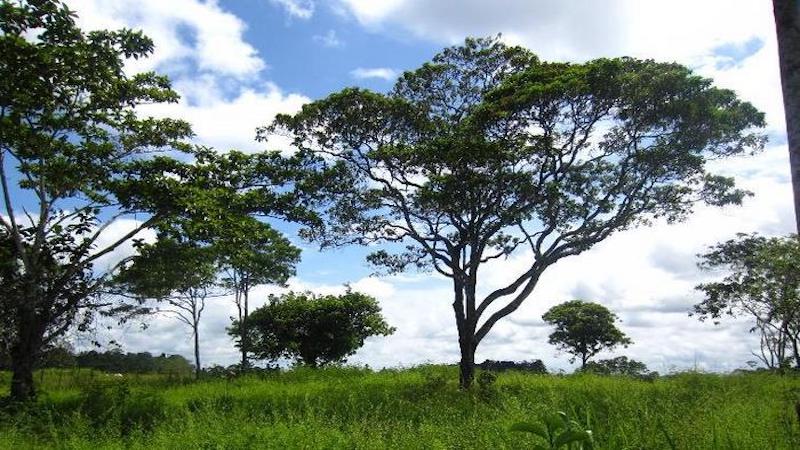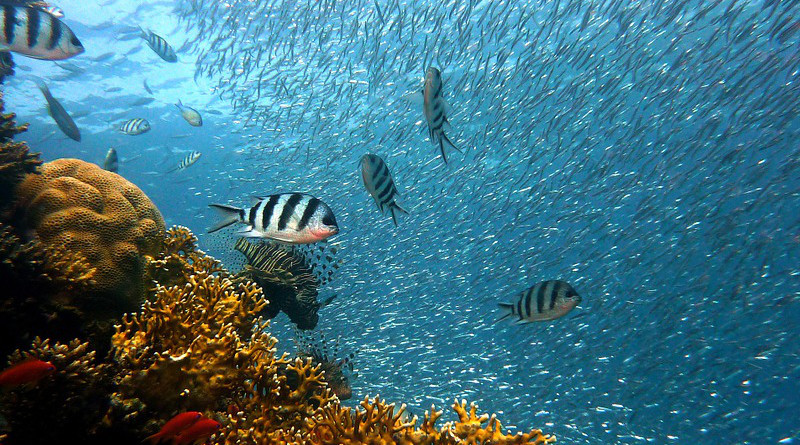The post Dutch leader Mark Rutte clears a big hurdle to becoming NATO chief after Hungary lifts objections – ABC News first appeared on The Russian World.
Day: June 18, 2024
The post World leaders join Ukraine summit in test of Kyiv’s peace push – Honolulu Star-Advertiser first appeared on The Russian World.

На промышленной площадке Соткамо начата добыча природного урана, что делает Финляндию первой страной-членом Евросоюза, эксплуатирующей урановые рудники, сообщила горнодобывающая компания Terrafame.
The post Финляндия начала добычу урана на своей территории first appeared on The Russian World.
The post Байден поздравил американцев с Днем освобождения рабов first appeared on The Russian World.
The post Байден амнистировал сотни тысяч супругов, подлежащих депортации first appeared on The Russian World.
NPR News: 06-18-2024 7PM EDT
Learn more about sponsor message choices: podcastchoices.com/adchoices
The post NPR News: 06-18-2024 7PM EDT first appeared on The South Caucasus News.

When trees and livestock compete for land, the trees usually lose. It doesn’t have to be this way. But centrally designed plans to implement tree-livestock coexistence in deforested areas don’t always work on faraway farmland.
The ineffectiveness can be due to trying to accomplish too much too quickly. Transforming hundreds of thousands of hectares of treeless or degraded pastures into sustainable landscapes for livestock, nature and people should be a gradual, low-disruption process. And it should start with the people already quietly transforming small pieces of land – and those who want to.
In the southern Colombian department of Caquetá, which is recovering from decades of armed conflict and is now beset by reckless deforestation and the destructive forces of climate change, the people leading the change tend to be women, new research shows.
When women are in charge of the land (and only 15% of them were in the study), they are more likely than men to have silvopastoral livestock systems, where cattle meander through trees and eat plants grown on the landscape. Whether they manage the land or not, women are more willing to integrate nature into livestock farming.
“We found that women are more motivated to conserve the environment,” said Augusto Castro, a researcher at the Alliance of Bioversity International and CIAT and the lead of the study published Scientific Reports. “Additionally, they have a higher propensity to adopt silvopastoral systems.”
Researchers collected data collected on more than 2,800 paddocks, which are small parcels of farmland for raising livestock. Along with gender-differentiated data, they collected socioeconomic information from farmers that point to several paradigm-challenging ways to incentivize the adoption of silvopastoral systems in conflict-affected settings in Colombia.
“We’re still developing strategies to promote sustainable silvopastoral systems based on beliefs and not on facts,” Castro said. “We need to use data from systematic studies to scale up silvopastoral systems successfully.”
Know the landscape
The study was conducted under the Sustainable Productive Strategies Project, which is funded by Germany’s International Climate Initiative (IKI), and the CGIAR Initiative on Low-Emission Food Systems, which provides research for low-emissions development and to increase farmer resiliency to climate change.
Compared to degraded, mostly treeless pastures, silvopastoral farms are better for the environment: they reduce greenhouse gas emissions, store more carbon, diversify farm production, conserve biodiversity, and mitigate the negative impacts of weather extremes. They can also increase farm income.
While becoming globally more popular, silvopastoral uptake everywhere remains slow. Why?
In southern Colombia, one reason is a poor understanding of the incentives to adopt silvopastoral systems – and the integration of these incentives into policies and implementation. Another is economic: landscape transformation requires substantial investments of time and money before bottom lines start to improve. But access to finance is not necessarily the primary barrier to adoption: 56% of farmers surveyed have access to credit to invest in their farms.
“Just because you have the means to invest in silvopastoral systems doesn’t mean you will do it,” Castro said.
While women are more motivated than men to have trees on their farms for environmental reasons and to benefit future generations, it doesn’t mean that men do not want trees on their farms; they just have different motivations. The study showed that men place a greater value than women on on-farm trees for future construction projects.
Both men and women value trees to comply with conservation agreements, generate income, conserve water, and shade for people (but significantly less so for animals, suggesting that greater awareness of the benefits of escaping the heat for livestock health is needed).
More research is needed to understand gender preferences for silvopastoral systems, but co-author Mary Ngaiwi, an Alliance researcher, said women spend more time working the land and therefore know it better.
“Women may be more motivated to plant trees because they have a better understanding of the state of their plots and have more ideas on how to do things that improve farm output,” Ngaiwi said. “The activities are good for the environment but improving the environment may not be the top motivating factor.”
Additionally, women see up close one of the main benefits of silvopastoral systems: healthier livestock. “Since women are involved in milking and feeding, they can see these effects more quickly,” said Alexander Buritica, a co-author from the Alliance and Universidad de los Andes, a Colombian university.
Even though only 17% of paddocks in the study had basic levels of silvopastoral implementation (improved pastures and trees) and 7% had medium-to-high levels (pastures, trees, aqueducts for livestock and fodder banks), the benefits of silvopastoral implementation are becoming better known. Some 45% of farmers surveyed said they were aware of success stories related to silvopastoral farming in their municipalities.
“The growing awareness of the benefits of silvopastoral farming may help increase motivation to implement these systems,” said Marcela Quintero, a co-author and Associate General Director of the Alliance. “But the majority of farmers will need to hear silvopastoral success stories from other farmers. Communicating these stories – and building more of them – should be a priority for organizations promoting implementation.”
Implementation also requires a strong, long-term commitment to providing technical advice to people who want to improve their land. “Providing financial assistance only would not be enough,” Quintero said.
Smarter scales
The study’s focus on paddocks (as opposed to entire farms) obtained granular information on silvopastoral implementation and benefits. Many farms dedicate only a portion of their farm to silvopastoral activities and could be missed in broader studies that attempt to gauge adoption levels and related benefits.
The study suggests implementation organizations should focus on supporting silvopastoral systems at the paddock level and plan for scaling to one paddock at a time. The study also showed that benefits begin accruing even at basic levels, suggesting that metrics for successful adoption should focus on smaller scales.
“Silvopastoral systems are not black and white,” said Carolina González, a co-author from the Alliance. “At least three or four practices could be gradually integrated into a silvopastoral system. Our research model reflects this reality. And, during early stages of uptake, it’s probably better to invest in 10,000 basic adopters at the paddock level rather than 10 high-scale adopters at the entire farm level.”
The post For Sustainable Livestock Farming Bordering The Amazon Rainforest, Look To The Women first appeared on The South Caucasus News.
Is Coffee Good For You Or Bad For You?

Coffee drinking is a heritable habit, and one that carries a certain amount of genetic baggage.
Caffeinated coffee is a psychoactive substance, notes Sandra Sanchez-Roige, Ph.D., an associate professor in the University of California San Diego School of Medicine Department of Psychiatry. She is one of an international group of researchers that compared coffee-consumption characteristics from a 23andMe database with an even larger set of records in the United Kingdom. She is the corresponding author of a study recently published in the journal Neuropsychopharmacology.
Hayley H. A. Thorpe, Ph.D., is the lead author on the paper. Thorpe, of the Department of Anatomy and Cell Biology, Schulich School of Medicine and Dentistry at Western University in Ontario, explained that the team collected genetic data as well as self-reported coffee-consumption numbers to assemble a genome-wide association study (GWAS). The idea was to make connections between the genes that were known to be associated with coffee consumption and the traits or conditions related to health.
“We used this data to identify regions on the genome associated with whether somebody is more or less likely to consume coffee,” Thorpe explained. “And then identify the genes and biology that could underlie coffee intake.”
Abraham Palmer, Ph.D., is also a lead researcher on the paper and a professor in the UC San Diego School of Medicine Department of Psychiatry. He said that most people are surprised that there is a genetic influence on coffee consumption. “We had good reason to suspect from earlier papers that there were genes that influence how much coffee someone consumes,” he said. “And so, we weren’t surprised to find that in both of the cohorts we examined there was statistical evidence that this is a heritable trait. In other words, the particular gene variants that you inherit from your parents influence how much coffee you’re likely to consume.”
Sanchez-Roige said the genetic influence on coffee consumption was the first of two questions the researchers wanted to address.
“The second is something that coffee lovers are really keen on learning,” Sanchez-Roige said. “Is drinking coffee good or bad? Is it associated with positive health outcomes or not?”
The answer is not definitive. The group’s genome-wide association study of 130,153 U.S.-based 23andMe research participants was compared with a similar UK Biobank database of 334,649 Britons, revealing consistent positive genetic associations between coffee and harmful health outcomes such as obesity and substance use. A positive genetic association is a connection between a specific gene variant (the genotype) and a specific condition (the phenotype). Conversely, a negative genetic association is an apparent protective quality discouraging the development of a condition. The findings get more complicated when it comes to psychiatric conditions.
“Look at the genetics of anxiety, for instance, or bipolar and depression: In the 23andMe data set, they tend to be positively genetically correlated with coffee intake genetics,” Thorpe said. “But then, in the UK Biobank, you see the opposite pattern, where they’re negatively genetically correlated. This is not what we expected.”
She said there were other instances in which the 23andMe set didn’t align with the UK Biobank, but the greatest disagreement was in psychiatric conditions.
“It’s common to combine similar datasets in this field to increase study power. This information paints a fairly clear picture that combining these two datasets was really not a wise idea. And we didn’t end up doing that,” Thorpe said. She explained that melding the databases might mask effects, leading researchers toward incorrect conclusions — or even cancelling each other out.
Sanchez-Roige says the researchers have some ideas about how the differences in results arose. To begin with, there was an apples-and-oranges aspect to the surveys. For instance, the 23andMe survey asked, “How many 5-ounce (cup-sized) servings of caffeinated coffee do you consume each day?” Compare it to the UK Biobank’s “How many cups of coffee do you drink each day? (Include decaffeinated coffee)”
Beyond serving size and the caffeinated/decaf divide, the surveys made no accommodation for the various ways coffee is served. “We know that in the U.K., they have generally higher preference for instant coffee, whereas ground coffee is more preferred in the U.S.,” Thorpe said.
“And then there’s the frappuccinos,” Sanchez-Roige added, citing the American trend of taking coffee loaded with sugary additives. Palmer mentioned other caffeinated drinks and especially in the context of the UK Biobank, tea, none of which were included in the GWAS, which addressed only coffee. Palmer added that the GWAS demonstrates the relationship between genotype and phenotype is more different than the relationship between coffee and tea.
“Genetics influences lots of things. For instance, it influences how tall you might be,” he said. “And those kinds of things probably would play out very similarly, whether you lived in the U.S. or the U.K. But coffee is a decision that people make.”
Sanchez-Roige pointed out that coffee comes in a variety of forms, from instant to frappuccino, and is consumed amid cultural norms that differ from place to place. A person with a given genotype might end up having quite a different phenotype living in the U.K. versus the U.S.
“And that’s really what the data are telling us,” she said. “Because unlike height, where your behavior doesn’t really have much to do with it, your behavior and the choices you’re making in your environment play out in various ways. So the interaction between genotype and environment complicates the picture.”
The collaborators stressed the need for more investigation to unravel the relationships between genetics and the environment, focusing not only on coffee/caffeine intake but also other substance-use issues.
The post Is Coffee Good For You Or Bad For You? first appeared on The South Caucasus News.

Scientists have created a research framework to incorporate ecological theory – mathematical models and concepts to understand interactions and dynamics of ecosystems – into ecosystem management and planning to more effectively scale restoration and counter rising carbon dioxide emissions globally.
From coral reefs to forests, restoration helps damaged natural areas return to a healthy state able to support plant and animal life. Effective restoration helps protect wildlife, provides clean water and air, fights climate change, prevents flooding, supports recreation and the economy, and makes the environment more resilient to changes, including fires and floods.
But it hasn’t been a quick fix. “Global declines in natural habitats due to human activities far outpace ecosystem gains due to conservation successes,” said Brian Silliman, marine conservation biologist and director of a Duke University initiative to rebuild habitats such as coastlines and grasslands, Duke RESTORE, as well as the university’s Wetland and Coasts Center.
“The world is looking to ecosystem restoration to help address this gap,” Silliman said. Ecosystem restoration aims to help damaged or destroyed natural areas recover by reintroducing native plants and animals, improving soil and water conditions, and involving local communities to create healthy, self-sustaining environments.
“Unfortunately, most restoration efforts underperform,” said Silliman. “More effectively harnessing ecological theory in ecosystem restoration designs will go a long way towards making restoration a more viable conservation strategy.”
Silliman led a team of 23 scientists working across six countries to create a conceptual framework that maps ecological theories to desired restoration outcomes, published in Current Biology.
“Incorporating ecological theory into restoration practice can reduce costs to repair ecosystems, prioritize climate-smart restoration, and help rebuild ecosystems faster,” said Brian Silliman. “Nature is more predictable than we realize, so why not harness that power?”;
For example, food-web theory and field tests of the idea, have shown that predators are key to plant life in almost all ecosystems, as predators protect regrowing plants from hungry herbivores. However, less than 10% of plant ecosystem restoration efforts incorporate predators into their designs. ;
“Ecological theories grounded in decades of testing and evidence are underutilized in restoration”, said Carter Smith, a Duke University lecturing fellow and scientist with Duke RESTORE. “Theories are abstract and often hard to understand if you are not a subject matter expert. We hope our analysis and guidance will help practitioners identify which theories are most relevant for their project goals.” ;
The scientists created a nine-step flow chart to implement a restoration project, starting with identifying the ecosystem/species and finishing with evaluation. This approach links desired outcomes, from taxonomy-specific to system-wide outcomes, to relevant ecological theories. The researchers outlined 10 ecological theories as essential, but underutilized, in restoration efforts. While these theories share common themes, they differ in focus and methodologies.
For example, facilitation cascade theory suggests that helpful interactions can create a chain reaction benefiting multiple species in a recovering ecosystem, while threshold theory looks at how recovered ecosystems react to changes or disturbances, emphasizing that small changes can sometimes lead to big, sudden shifts. Biogeography and macroecology theory outlines how physical factors shape where species live now and helps predict where they will live in the future, critical information restoration practitioners need to select which species to replant based on changing climates. Biodiversity-ecosystem functioning theory examines how the variety of life in an ecosystem affects how well it works, like its productivity and ability to sequester and store carbon.
The post Harnessing Ecological Theory For Successful Ecosystem Restoration first appeared on The South Caucasus News.

